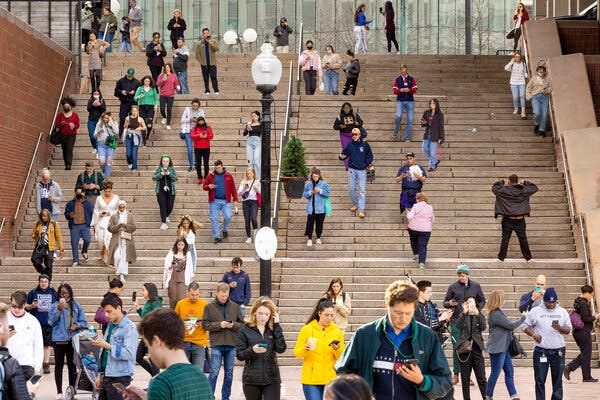American classics author Kurt Vonnegut, a self-proclaimed Luddite, detested the way technology optimized everything. He was a strong advocate of the ambling life, and believed the hyper-convenience of computers made everything too efficient, stripping away any opportunity for beautiful detours and serendipitous encounters.
From an interview in the November 1995 issue of Inc. Technology, Vonnegut waxed lyrical about why - in a world infinitely accessible at our fingertips - we should still always choose to venture out into the wild on mundane, unnecessary missions:
“Oh, she says well, you're not a poor man. You know, why don't you go online and buy 100 envelopes and put them in the closet? And so I pretend not to hear her. And go out to get an envelope because I'm going to have a hell of a good time in the process of buying one envelope. I meet a lot of people. And, see some great looking babes. And a fire engine goes by. And I give them the thumbs up. And, and ask a woman what kind of dog that is. And, and I don't know...And, of course, the computers will do us out of that. And, what the computer people don't realize, or they don't care, is we're dancing animals. You know, we love to move around. And, we're not supposed to dance at all anymore.”
In many ways what Kurt said turned out to be prophetic. The modern world is not particularly compatible with the dancing animals within us. Over the course of the last decades, innovation in commerce, travel and technology has largely stifled any desire to amble aimlessly, wander curiously. To observe and soak up our surroundings, rather than march forward towards the destination and objective, in a timely and efficient manner.

It’s not a surprise that we try to reduce and avoid travel where possible. Misery, after all, thrives in transit. A recent study has broken down the types of places within cities that inspire the most anger and disgust. The analysis of almost 2 million geotagged tweets from London and San Francisco found that people most intensely expressed negative emotions near train stations, bus stops, and in cars stuck in congested traffic across bridges (people expressed more positive emotions in places like restaurants and parks).
The misery stems partly from the modes of transport taken: crowded busses, powerwalks down chaotic high streets and slow cars stuck in snaking traffic across vast urban sprawl. But it also stems from the prevalent attitude to the journey itself. With the dependence on satnav and delivery apps, the built environment has been reduced to a series of funnels and tubes, rather than areas to venture through and explore. Spaces where we (and the items we buy), are sent from A to a defined B, with maximized cost and time efficiency.
Despite this, an urge to amble and wander is beginning to bubble up again. This has become evident through our changing relationship with navigation. Apps like Google and Apple Maps have, for a long time, been limited to functionally funnelling us to specific locations. But recently, they’ve begun to evolve, in a bid to revitalize our relationship with our surroundings.
One of the key new features Google Maps rolled out at the end of last year included “neighbourhood vibe”, helping users to pick out areas that are nice to explore based on mood, rather than directing them to a specific location.
Another neat soon-to-be-released feature includes “glanceable directions”, letting you track your journey right from the lock screen, allowing users to enjoy the journey, rather than be glued to their phones, ensuring they’re following the dotted line to the destination.
There’s also been a rebellion against digital navigation as a whole, with a reported resurgence in paper maps. What do foldable paper maps offer that digital alternatives can’t? They’re less efficient, hard to read, and impossible to fold back neatly. But in many ways, they enhance the journey. With a paper map, there’s the sense of accomplishment you get from using your own sight and sense of bearing, in order to figure out where on the map you are and where you need to get to. There’s the thrill of knowing you might get dangerously lost. Maybe you’ll be forced to wave down a stranger in the woods to ask them to show you the route out. Maybe you’ll share a hearty, life-affirming chuckle together before each goes their separate ways.
Another report announced a (personally shocking and outlandish) stat: 56% of Americans have at least once recently come to the airport without a confirmed destination, picking a location on the spot. Selecting the trip at the departures lounge would provide a pretty heady rush, you would feel pleasantly surprised by your own spontaneity, and delighted by circumventing the laborious and spirit-killing preplanning phase.
Author and artist Jenny Odell gave, 5 years ago already, her first manifesto keynote on the importance of “doing nothing”, which became a viral call-to-action to break away from “a situation where every waking moment has become pertinent to our making a living”. Step by step, we’re starting to treat time as more than just an economic resource. We are rediscovering the vitality of strolling with no set target, following a spontaneous wanderlust, finding beauty in the random encounters, detours and unexpected destinations. In a world infinitely accessible and optimized, we still want to find ways to amble and dance, joyously and aimlessly.





